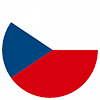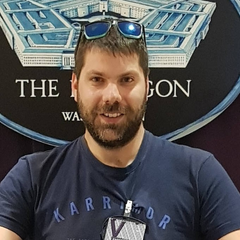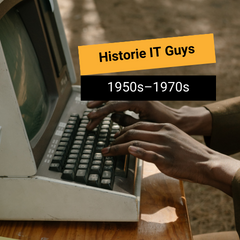A practical guide for IT professionals on how to conduct a career review of 2025 and plan goals for 2026. From career summary through AI and cloud skills development to certifications, portfolio, and work-life balance. Including specific tools (OKR, SMART) and a 20-minute challenge you can start immediately.
The IT Market is Really Changing Rapidly and Irreversibly
The last two years have brought enormous changes. AI is no longer a supplement but the foundation of development, with growing demand for data, cloud, and cybersecurity. At the same time, the market is splitting: some traditional roles are disappearing, others are specializing (AI/ML, cloud security, data engineering).
What does this mean for you? Continuously prove your value. Have a portfolio, projects, certifications, and expand your skills where the market is growing.
Analysts confirm that AI is a platform change that will affect how software is built, how security is managed, and what teams companies build. The fastest growing demand is for skills in AI, big data, networks, and cybersecurity. Also valued are adaptability, creative and analytical thinking.
Why Do a Career "Summary" at the End of the Year
You might be thinking: "Another document? Do I really need this?" Yes, but not for the HR department. It's an inventory of your value. It's about being clear on what you can do, what you've accomplished, and where you want to go next. It's a foundation that will serve you well whether you're going to a performance review, negotiating a raise, or thinking about a role change.
We often run on autopilot: project after project, sprint after sprint. The year flies by, we feel like we've done a lot, but when someone asks us for specific examples, we don't know where to start.
The summary will help you prepare concrete facts instead of uncertain "I did a lot of projects." Identify gaps. You'll see where you're stagnating or what you're missing relative to trends. You'll also gain a sense of control. After all, in a field where everything changes every six months, it's good to know that you're driving your career, not chance or the market.
How to Do It: Practical Procedure for Your Summary
1. Collect Data
Review:
Calendar: What projects did you complete? What milestones did you cross?
GitHub/GitLab: Commits, pull requests, code reviews. How much did you contribute to open source?
Jira/Asana: Completed tasks, releases, sprint goals.
Emails and Slack: Praise from colleagues, feedback from management, successful feature launches.
Public activities: Blog posts, tech talks, workshops, mentoring hours.
Tip: You don't have to do it all at once. Just write down 2-3 things that went well each week. At the end of the year, just put it together.
2. Write Down 3-5 Measurable Impacts
Numbers and concrete results are best:
- "I sped up the build pipeline from 15 to 6 minutes, saving the team 2 hours per week."
- "I fixed 12 critical security bugs."
- "I taught 5 juniors to work with Kubernetes, they all now deploy independently."
- "I wrote 8 blog articles that had a total of 15,000 views."
3. Answer These Questions
- What were my 3 biggest achievements this year?
- What would I do differently next time?
- Where do I have a gap relative to trends (AI, data, cloud, security)?
4. Get an Outside Perspective
Ask 2-3 people (colleagues, mentor, manager) for brief feedback:
- "What do you think I did well this year?"
- "Where do you see room for improvement?"
- "What role/technology do you see me in for the future?"
Compare it with what the market demands: Review 10-15 job postings for positions that interest you. What requirements are repeated? Where do you have reserves?
From Inventory to Action: What Next with the Summary?
You've completed your year review. You know what went well, what needs work, and what the market says. You know where you stand. A plan for 2026 will show you where to go next. Let's look at how to create such a plan.
Why Make a Plan for 2026
The market rewards those who plan adaptation. Those who are clear about where they're heading don't have to react in panic to every change, they have options prepared.
A plan gives you the power of choice: You'll be ready for new opportunities, whether it's a role, project, or consulting. You're not choosing out of necessity.
Align learning with goals: Instead of chaotically jumping from tutorial to tutorial, you'll have a common thread. Whether it's specific goals in areas that are growing (AI, data, cloud, security), or developing skills that AI will never take from you: critical thinking, communication, the ability to lead others.
With preparation, you'll also better maintain peace of mind.
How to Build a Plan for 2026: What Angles to Look at It From
A good plan is not a list of tutorials. It's a balanced combination of several areas:
1. Technical Skills
Choose 1-2 areas where you want to grow:
- New language or framework (Python for AI, Rust for performance, Go for cloud-native systems)
- Specialization (machine learning, data engineering, DevOps, security)
- Modernizing existing skills (from monolith to microservices, from on-premise to cloud)
How to start: With a small project, not a tutorial marathon. Create your own usable thing (CLI tool, web app, automation).
2. Certifications
They help twice: you learn a new area in a structured way + you have proof for the market.
Popular choices:
- Cloud: AWS Certified Solutions Architect, Azure Administrator, Google Cloud Engineer
- Security: CompTIA Security+, CISSP, Certified Ethical Hacker
- DevOps/Infrastructure: Kubernetes (CKA), Terraform, Docker
- Data: Databricks, Snowflake, dbt certifications
3. Role or Direction Change
Are you considering a pivot to growing domains? (AI engineer, data platform, cloud security, SRE)
Practical plan:
- Build a portfolio: GitHub repositories that showcase your work
- Write: blog articles, LinkedIn posts about what you're doing
- Speak: internal presentations, then meetups, then conferences
- Network: communities on Slack/Discord, LinkedIn
Tip: You don't have to change jobs right away. Try to "try out" the role internally. Volunteer for a project that interests you, or take on a mentoring role.
4. Soft Skills
Technical skill gets you to the interview, soft skills get you to a senior/lead position.
You can dive into:
- Presentation: internal talk (retrospective, case study, teach the team something new)
- Writing: blog article, documentation, RFC
- Facilitation: Lead a design meeting, retrospective, or onboarding of a new member
- Mentoring: Help a junior, colleague from another team, or community
5. Work-Life Balance
Career growth doesn't mean burnout. Plan sustainably.
Proven strategies:
- Time-blocking: Set aside time for deep work (no meetings, notifications).
- Maker's schedule: Whole days/half-days for concentrated work, we all unfortunately know 30-minute blocks between calls.
- Remote/hybrid rules: Clearly define when and where you work best, and communicate it.
- Tip: Also plan time for rest and hobbies. The best ideas often come when you're not thinking about work.
6. Methodology and Tools
For the plan not to be just a wish list, you need a way to track it.
We remind you of already known approaches:
SMART goals: Specific, Measurable, Achievable, Relevant, Time-bound
Bad: "Learn AI"
Good: "By the end of Q1 2026, create and deploy a RAG chatbot application with 50+ users"
OKR (Objectives & Key Results): Goal + 2-3 measurable results
Objective: "Become a recognized expert in cloud security"
KR1: Obtain AWS Security Specialty certification.
KR2: Publish 3 articles on cloud security best practices.
KR3: Present at 1 conference or meetup.
TIP: Check out online e-learning platforms. We've prepared an overview here.
Mini Challenge at the End
You don't need a revolution. Consistent evolution is enough: one project, one certification, one talk, one improved routine.
1. Write Down 1 Big Goal for 2026
What do you want to achieve in a year? Be specific.
Examples:
"Get AWS Solutions Architect certification and move to a DevOps position."
"Create a portfolio with 3 AI projects and start freelancing."
"Become a tech lead – manage a team of 3-5 people and the architecture of our product."
2. Add 3 Concrete Steps (30, 60, 90 Days)
Break down the big goal into smaller milestones:
- 30 days: Complete introductory course, create a simple prototype, write article draft
- 60 days: Get certification, deploy project to production, present internally
- 90 days: Publish case study, speak at a meetup, have 3 real references
3. Set a Deadline for the First Step
If you don't start within a week, you probably won't start at all.
The first step should be small and manageable:
- register for a course,
- create a GitHub repo and first commit,
- write an article outline,
- send a message to 2 people asking for feedback.
You don't have to share it with anyone. It's enough that you see it and start acting accordingly. It's not about being perfect. It's about being a little better than yesterday. Good luck!
The end of the year is the ideal moment to stop and reflect. And January is the ideal moment to start. So let's go.
⬇️
🟡 Have a colleague or friend looking for a new project? Join our referral program and receive a financial reward for your recommendation.
🟡 Want to start working in IT? Download our ebook Start Working in IT: from the first steps to your dream job, where we guide you step-by-step through the information, courses, and practice so essential not just for those wanting to change fields, but also for those looking to advance their careers and continue their education.
🟡 Wondering how to prepare the ground for new job beginnings as simply and effectively as possible? Check out our ebook Prepare for New Work Adventures: A Guide to Successful Job Change. Your dream job is just a door away, all you need to do is turn the handle correctly.
Or share this article, which might also be useful to your acquaintances.















